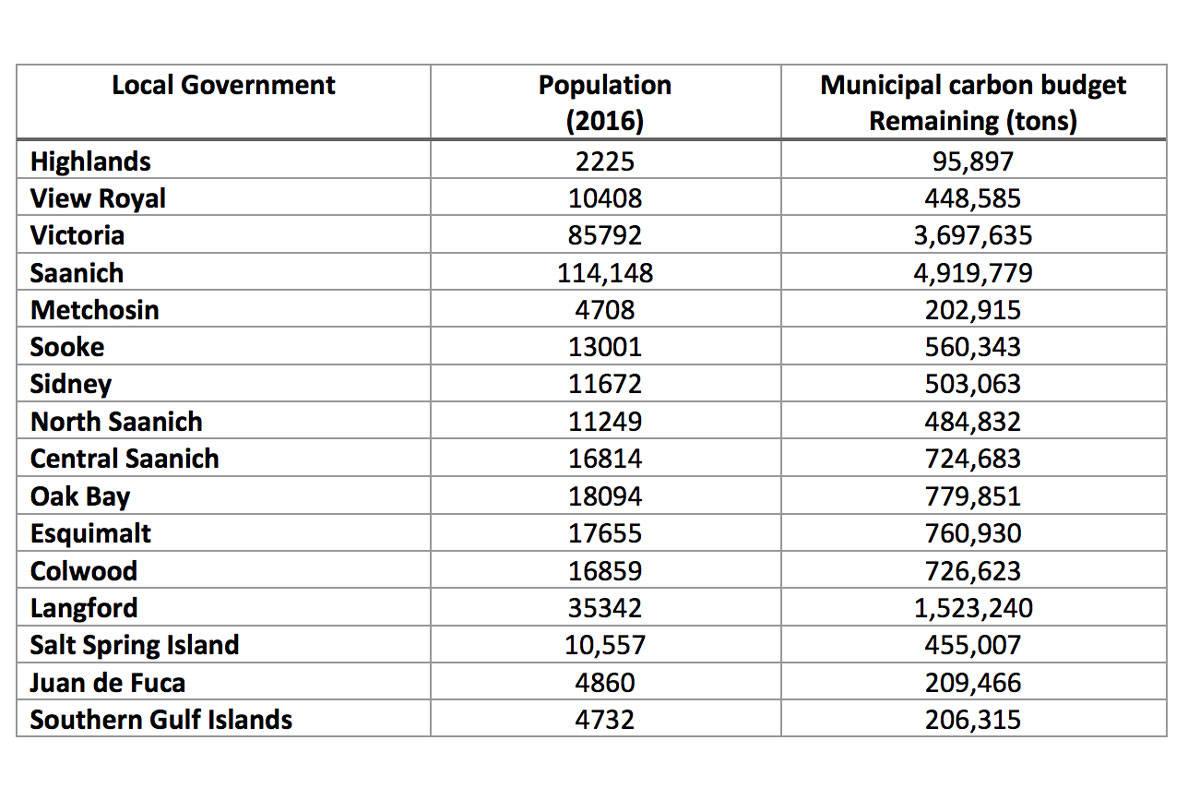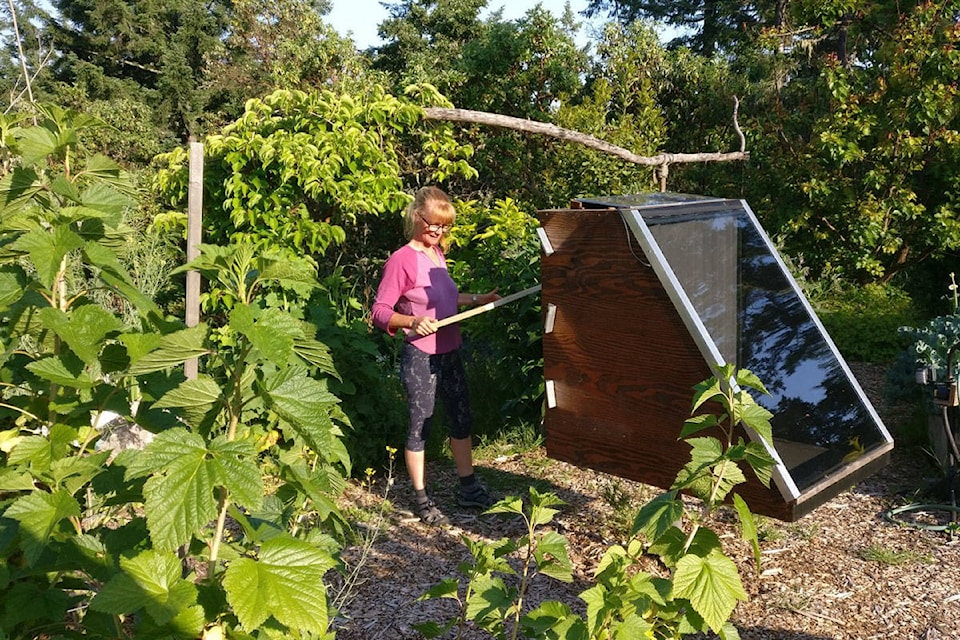A Highlands councillor created a “carbon budget” for each municipality in the Capital Regional District to demonstrate how much carbon is left for residents to use in order to reach climate goals by 2030 and 2050.
Using a report from the Intergovernmental Panel on Climate Change (IPCC), Coun. Ann Baird created a draft, one-page carbon budget. The IPCC report says that as of Jan. 1, 2018, the remaining amount of carbon dioxide that can be used on earth is 420 gigatons in order to have a 67 per cent chance of staying below the 1.5 C rise in global temperature.
As of Jan. 1, that number reduced to 336 gigatons of carbon dioxide. At current rates, the “budget” would be used up in eight years.
It’s “420 million tonnes – that’s how much room there was left in the atmosphere in 2018,” Baird said. “That’s a global number, so I said what would that look like locally?”
Baird divided the carbon budget number from 2020 by the global population, which is approximately 7.8 billion people. The number she ended up with – 43.1 tonnes – is how much carbon dioxide is allotted per person, in order to meet climate goals. This number assumes everyone is the same and does not factor in any ethics like global equity or loss and damage.
The average global person currently uses just over five tons of carbon per year and would use their personal carbon budget in eight years but Baird said with a growing population and growing global emissions, that number is even less.
People in the CRD municipalities have a higher carbon footprint and Baird said the carbon budget would be used up in just over five years at business as usual.
“This budget shows us the magnitude of the challenge we’re facing,” Baird said.
She noted that even manufacturing things like electric vehicles, laptops and homes uses up a lot of carbon and that the average food diet factors into a person’s carbon footprint as well.
While governments look at the benefits of energy efficiency in housing or electric vehicles, she said they often fail to account for what it takes to make them.
“So the idea of bringing this carbon budget forward to the CRD is to give us more tools to more accurately be honest with ourselves and the public,” Baird said. “We either accept reality or we just come right out and say we’re not going to make it … we set ourselves up for failure if we’re not working with the right data.”
Some solutions Baird proposes are to buy local food, use electric bikes, think about building a smaller home and look into the new technologies that exist to build homes that are carbon neutral.
According to Baird’s numbers, Highlands – with the smallest population – would have 95,897 tons of carbon remaining. Saanich, with the largest population, would have 4,919,779 tons of carbon remaining.
Baird is hoping the CRD will be able to come up with a better carbon budget for each municipality that could be updated each year, to keep track of how much has been used.
The budget would be like a bank account so residents could see how much has depleted.
The carbon budget was discussed at one of the meetings of the CRD’s Climate Action Intermunicipal Task Force and a motion was made to ask the CRD to look into it and bring it to the environment committee.

